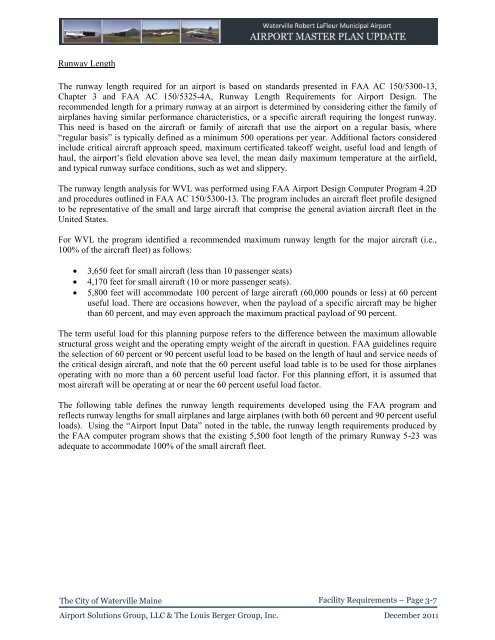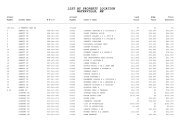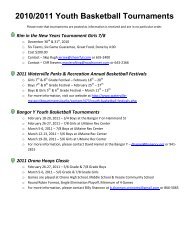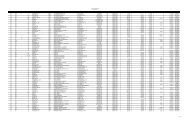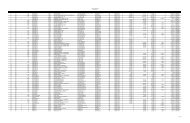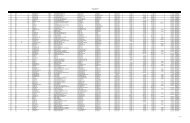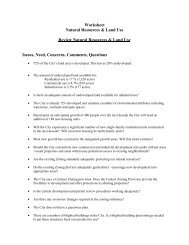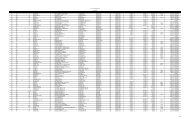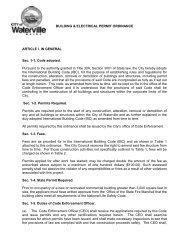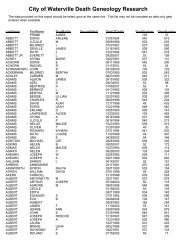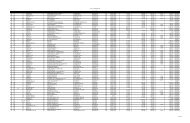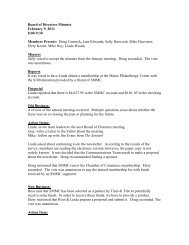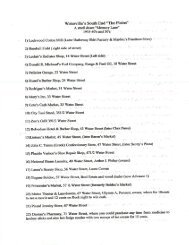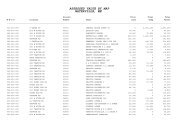Airport Master Plan 2012 - City of Waterville
Airport Master Plan 2012 - City of Waterville
Airport Master Plan 2012 - City of Waterville
Create successful ePaper yourself
Turn your PDF publications into a flip-book with our unique Google optimized e-Paper software.
Runway Length<br />
The runway length required for an airport is based on standards presented in FAA AC 150/5300-13,<br />
Chapter 3 and FAA AC 150/5325-4A, Runway Length Requirements for <strong>Airport</strong> Design. The<br />
recommended length for a primary runway at an airport is determined by considering either the family <strong>of</strong><br />
airplanes having similar performance characteristics, or a specific aircraft requiring the longest runway.<br />
This need is based on the aircraft or family <strong>of</strong> aircraft that use the airport on a regular basis, where<br />
“regular basis” is typically defined as a minimum 500 operations per year. Additional factors considered<br />
include critical aircraft approach speed, maximum certificated take<strong>of</strong>f weight, useful load and length <strong>of</strong><br />
haul, the airport’s field elevation above sea level, the mean daily maximum temperature at the airfield,<br />
and typical runway surface conditions, such as wet and slippery.<br />
The runway length analysis for WVL was performed using FAA <strong>Airport</strong> Design Computer Program 4.2D<br />
and procedures outlined in FAA AC 150/5300-13. The program includes an aircraft fleet pr<strong>of</strong>ile designed<br />
to be representative <strong>of</strong> the small and large aircraft that comprise the general aviation aircraft fleet in the<br />
United States.<br />
For WVL the program identified a recommended maximum runway length for the major aircraft (i.e.,<br />
100% <strong>of</strong> the aircraft fleet) as follows:<br />
<br />
<br />
<br />
3,650 feet for small aircraft (less than 10 passenger seats)<br />
4,170 feet for small aircraft (10 or more passenger seats).<br />
5,800 feet will accommodate 100 percent <strong>of</strong> large aircraft (60,000 pounds or less) at 60 percent<br />
useful load. There are occasions however, when the payload <strong>of</strong> a specific aircraft may be higher<br />
than 60 percent, and may even approach the maximum practical payload <strong>of</strong> 90 percent.<br />
The term useful load for this planning purpose refers to the difference between the maximum allowable<br />
structural gross weight and the operating empty weight <strong>of</strong> the aircraft in question. FAA guidelines require<br />
the selection <strong>of</strong> 60 percent or 90 percent useful load to be based on the length <strong>of</strong> haul and service needs <strong>of</strong><br />
the critical design aircraft, and note that the 60 percent useful load table is to be used for those airplanes<br />
operating with no more than a 60 percent useful load factor. For this planning effort, it is assumed that<br />
most aircraft will be operating at or near the 60 percent useful load factor.<br />
The following table defines the runway length requirements developed using the FAA program and<br />
reflects runway lengths for small airplanes and large airplanes (with both 60 percent and 90 percent useful<br />
loads). Using the “<strong>Airport</strong> Input Data” noted in the table, the runway length requirements produced by<br />
the FAA computer program shows that the existing 5,500 foot length <strong>of</strong> the primary Runway 5-23 was<br />
adequate to accommodate 100% <strong>of</strong> the small aircraft fleet.<br />
The <strong>City</strong> <strong>of</strong> <strong>Waterville</strong> Maine<br />
Facility Requirements – Page 3-7<br />
<strong>Airport</strong> Solutions Group, LLC & The Louis Berger Group, Inc. December 2011


